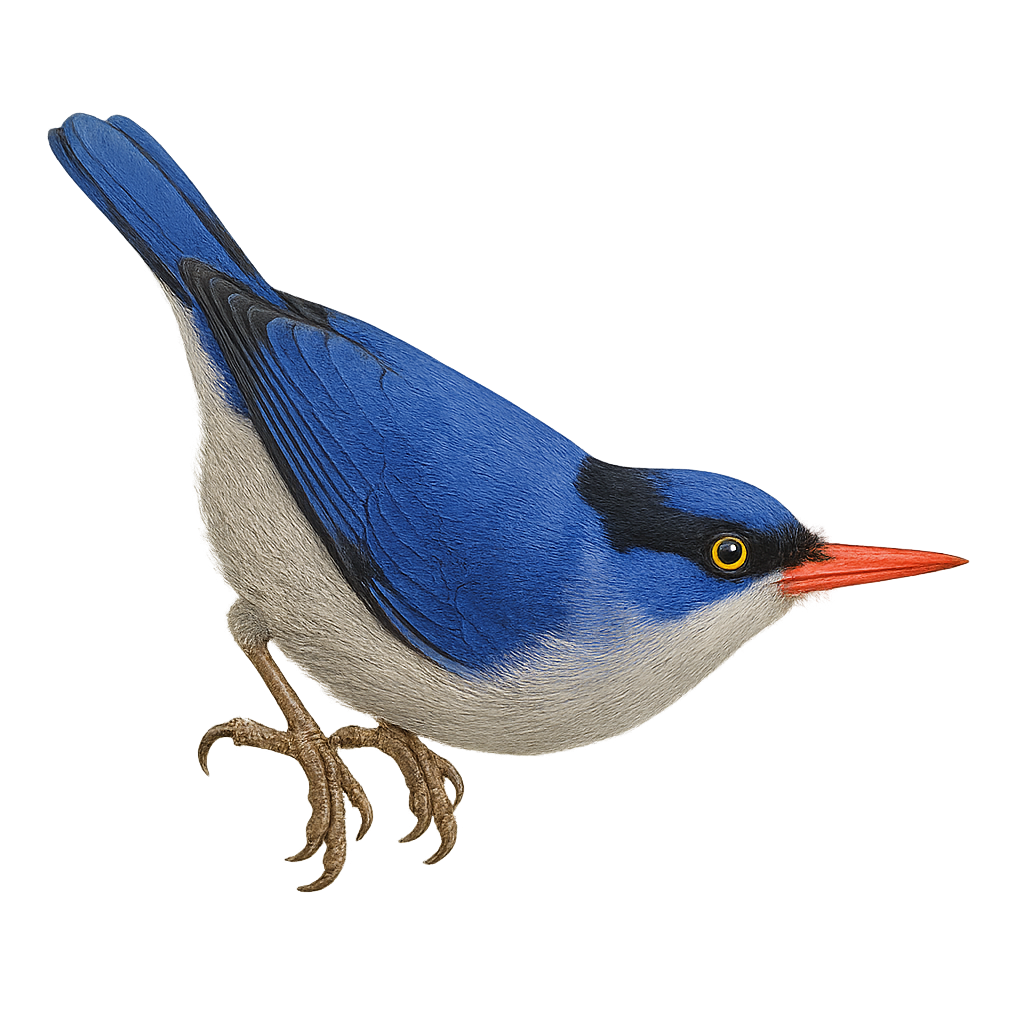Your wildlife photography guide.
Explore the velvet-fronted nuthatch in detail, study its behavior, prepare your shots.
Where to observe and photograph the velvet-fronted nuthatch in the wild
Learn where and when to spot the velvet-fronted nuthatch in the wild, how to identify the species based on distinctive features, and what natural environments it inhabits. The WildlifePhotographer app offers tailored photography tips that reflect the velvet-fronted nuthatch’s behavior, helping you capture better wildlife images. Explore the full species profile for key information including description, habitat, active periods, and approach techniques.
Velvet-fronted Nuthatch
Scientific name: Sitta frontalis

IUCN Status: Least Concern
Family: SITTIDAE
Group: Birds
Sensitivity to human approach: Tolerant
Minimum approach distance: 5 m
Courtship display: February to May
Incubation: 14-16 jours
Hatchings: February to June
Habitat:
Tropical forests, subtropical forests, mangroves
Activity period :
Primarily active during the day, with peak activity in the morning and late afternoon.
Identification and description:
The Velvet-fronted Nuthatch is a small, colorful bird, primarily blue with a distinctive yellow cap. It is often seen in the dense tropical forests of Southeast Asia, where it moves nimbly along trunks and branches in search of insects and seeds. Its social behavior is notable, as it often travels in small groups, emitting high-pitched calls to communicate. Although primarily arboreal, it occasionally descends to the ground to forage. Its ability to climb headfirst down trees is characteristic of nuthatches. The Velvet-fronted Nuthatch is a resilient bird, capable of adapting to various forest habitats, but remains vulnerable to deforestation.
Recommended lens:
300 mm – adjust based on distance, desired framing (portrait or habitat), and approach conditions.
Photography tips:
To photograph the Velvet-fronted Nuthatch, it's advisable to use a 300mm lens or longer to capture precise details without disturbing the bird. Look for areas where these birds are active, such as tropical or subtropical forests. Be patient and discreet, as although they are tolerant, sudden movements can scare them away. Use a fast shutter speed to freeze their quick movements. The natural light of the morning or afternoon can provide a beautiful ambiance for your photos.
The WildlifePhotographer App is coming soon!
Be the first to explore the best nature spots, track rutting seasons, log your observations, and observe more wildlife.
Already 1 429 wildlife lovers subscribed worldwide

